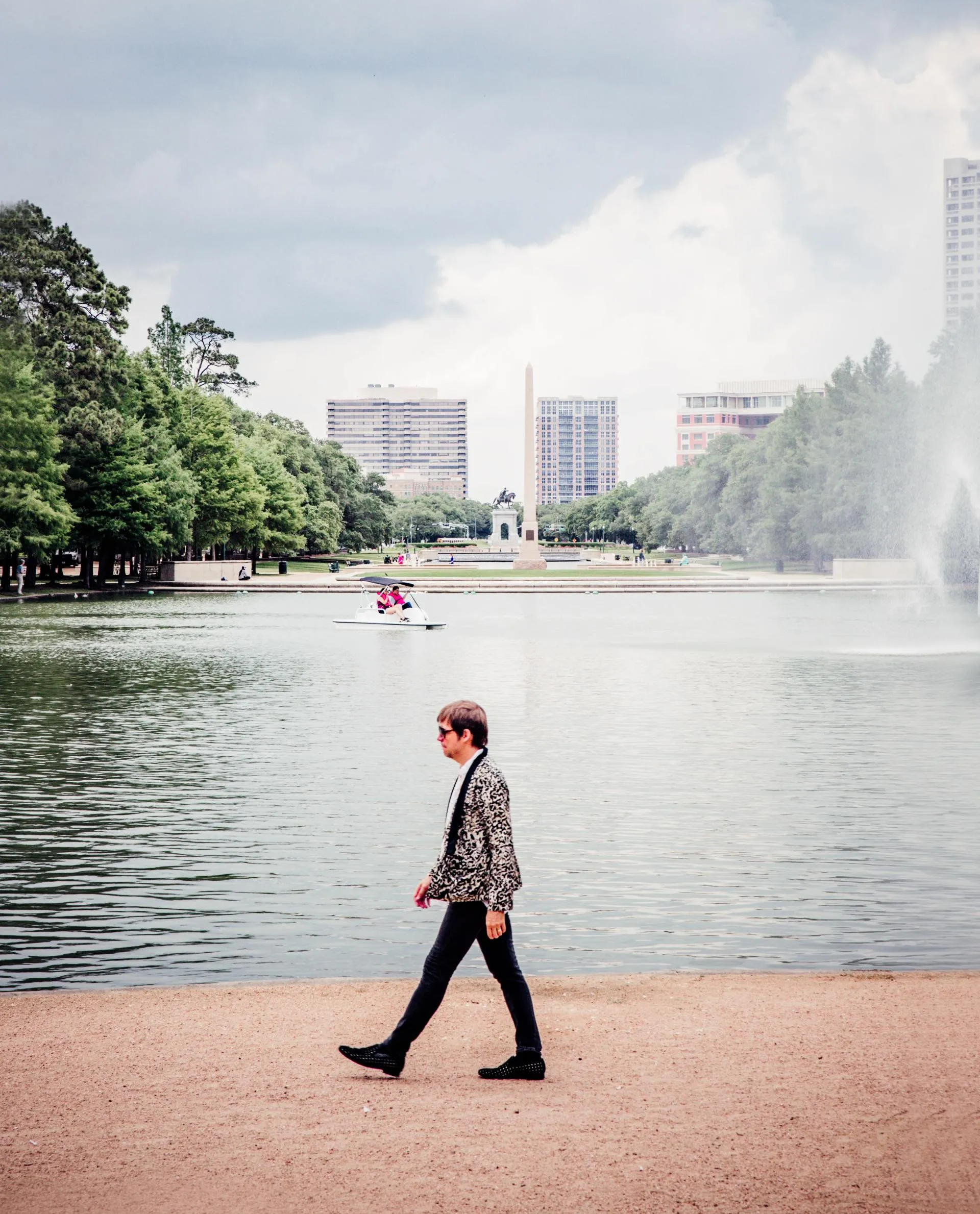How to get the best out of working remotely
Enabling Talent
How to make remote working work for YOU
FROM:
The Center for Creative Leadership
The Center for Creative Leadership
INTRODUCTION
Remote working is familiar to many (all of our consultants work from home, and many have done so for decades), but for many others it is an entirely new experience. Inevitably, some will hate it while others love it, but everyone will be trying to make it work for them (and for their organisations and their families).
Remote working is not a temporary shift, but a paradigm change. We've wondered for decades why large organisations invest millions in real estate rather than trust the people they hire to work well at home. Good leaders know that the people they hire can be trusted (if you're a leader and you don't think this is the case please speak to us about how to improve your hiring processes).
More subtle, but even more powerful than the financial incentive for firms to encourage home working, is that talented, marketable people are going to make it happen for themselves. They expect businesses to make working from home part of their employee offering. This has been happening for some time - one General Counsel I know told the business that headhunted him that he wanted to work from home and that he would only work three days a week so that he could spend the rest of his time with his family and composing music. They agreed.
Today, millions of people are striving to make home working work for them. So we decided to distil the thinking that consultancies around the world have put together and share it with you. Below is some of the best thinking from world-class sources about how to make remote working work for you. And, of course, some thoughts of our own.
KEY TAKEAWAYS
1.
There are five specific areas you can work on to build your resilience:
a. Sleep
– a healthy routine with regular times for going to bed and getting up improves attention, concentration and reaction time, and diminishes anxiety, irritability and depression. Short naps can help.
b. Exercise
– especially in green spaces decreases stress, improves mood, enhances focus and boosts self-control. Even short periods of exercise help.
c. Giving “Affectionate attention” to your own thoughts and emotions
– also known as Mindfulness, or “being present” helps us stay in the “here and how” and prevents us spiralling into unhelpful negative thinking.
d. Becoming more aware of the things in your life that you are grateful for – a “gratitude practice”
– makes us more appreciative, trusting and social, and enables us to be aware of and focus on what’s good and working well in our lives.
e. Connection and community
– we are social animals; connection is important to us and improving the quality and consistency of our social interactions can dramatically increase our resilience.
2.
Understanding ourselves and how we react to stressful situations – being self-aware - is important to maintaining self-care and relationships, as well as our decision-making and productivity.
3.
Leading other people provides a need - and an opportunity - to help them maintain their resilience and thrive in times of adversity. Communication is key; trust is crucial. Acknowledge the situation, address their concerns and help them shift their mindset towards finding their purpose and creating solutions.
4.
Three communication skills come to the fore for leaders in challenging times: direction-giving, meaning-making and empathy. Leaders should avoid relying on #1, and instead dial up #2 and #3. Help people take control of as much as possible; seek to engage, empower and inspire. Delegate outcomes - and control over how to achieve them - not just tasks.
5.
Leaders have a responsibility to help team members adapt well to working remotely. Above all they must adjust their own communication style to help colleagues stay engaged and productive when working remotely.
6. Self-care
is vital for all of us. Some simple things we can do to look after ourselves:
a. Breath
– take a few moments to practise mindful breathing. Exhale longer than you inhale, and express one thought of gratitude. Think about someone or something in your life you’re grateful for, and what they mean to you. If you feel anxious or unfocused during the day, take eight minutes and just breath, observing your passing thoughts and feelings without judgment. If your thoughts or emotions try to grab your attention or distract you, just bring your focus back onto your breath.
b. Eat and sleep well.
It’s impossible to overstate the importance of these foundations of our wellbeing.
c. Create connection
– when stressed we typically turn to those close to us for comfort and support. Social distancing doesn’t have to mean isolation. Reach out to others; reinforce the connections that are important. Let the people who matter to you know they matter to you.
d. Find purpose
– in troubled times our everyday routines can seem to lack meaning. Victor Frankl, wrote, “Life is never made unbearable by circumstances, only by lack of meaning and purpose.” Think about where you might find meaning and a connection with something beyond yourself and your circumstances. Follow your heart to find where you can make a difference, however small, that means something to you.
From Fresh Air Fridays -
THE FOUR ASPECTS OF TOTAL WELLBEING
To be fully well and live our best life, it is helpful to be aware of, and take care of, all these aspects of ourselves.
The Physical You
Your body, requires good nutrition, beneficial exercise, adequate rest and proper stress management, all of which help to keep us at an appropriate weight for each of us as individuals.
The Emotional You
benefits from self-supportive attitudes, positive thoughts and viewpoints and a positive self-image. Giving and receiving forgiveness, love and compassion will support you; as well as laughing and experiencing happiness and joyful relationships with yourself and others.
The Mental You
also benefits from self-supportive attitudes and a positive self-image. Intellectual stimulation, being able to bring different perspectives to situations and grow yourself, as well as taking pleasure from moments of stillness and calm.
The Spiritual You
can be openness to your creativity, trust in your inner knowing and connection with yourself and others; for some it also includes having a relationship with a higher power.
We are all unique, and so what ‘total wellbeing’ looks like for each of us is likely to be very different. However, the science shows that these are some universal tips which will serve you well.
FIVE TOP TIPS FROM FRESH AIR FRIDAYS _
These are simple tools and techniques to support your own mental and emotional wellbeing.
The tip pages in the links below outline ‘how to do it’ and ‘why it works’.
With consistent use these ideas build mental and emotional resilience, providing a solid foundation for total wellbeing.
- Breathing - how to tune into your breathing... and relax
- Being Present - being in the moment is often an ok place to be
- Filling Yourself Up First - put your own oxygen mask on first; if you're not well, nothing works well.
- Gratitude - "When it rains look for rainbows, when it's dark look for stars." - Oscar Wilde
- Get Outside - even if it's just for a short walk, the evidence shows that being outdoors brings real benefits in terms of wellbeing.
"Nothing will work well if you're not well."
We cannot help anyone – not ourselves, the ones we love, our friends, our colleagues, our customers, anyone - if we are not well and healthy.
Stay safe, stay well,

Businesses that are committed to building a global presence have been selecting and developing leaders remotely for some time. As a result, our consultants have been involved in delivering remote assessments since around 2005. Since covid, more and more businesses have realised that leaders in global businesses have to lead people and generate teamwork remotely, rather than face-to-face. When we speak of leadership today there is no longer an assumption that people will be in the same room. It's vital to realise that leading people from a distance places different demands on a leader and makes new demands of the team. If you're looking for people to lead geographically distributed and remote-working teams you really need to assess their leadership capability in that context. Our consultants have assessed hundreds of senior leaders using remote assessments. It offers many advantages. A well-designed remote assessment enables you to create a truly immersive experience that faithfully represents the demands and challenges of the role you're recruiting for. This matters matters. Research shows that assessments that take into account the context in which leaders are being asked to perform are four times more accurate at predicting leadership potential than generic assessments. This means that the combination of bespoke content and realistic assessment methodology ensure your potential leaders and hires are demonstrating their capabilities in a simulation setting that is highly predictive of their actual capability and potential. Here's one example of such an assessment - a leadership simulation called SkyFly, co-created with a client to represent their specific business context:

Tasked with identifying how an organisation of 700 employees in a global pharmaceutical organisation could become more effective, our colleague, Dr. Julia von Onciul, swiftly earned the trust of the leadership team and helped them take a radical approach. The challenge It quickly became apparent to Julia that the departments had developed in silos as part of what can be called ‘natural’ departmental growth, i.e. technical specialists, growing into the roles of managers and then the business leadership, whilst managing their own areas from a specialist, rather inward oriented perspective. As a result the senior leadership team was firefighting; managing their individual departments through day to day challenges. "Leadership" meetings were high-jacked by the need to manage issues that were making the interfaces of departments ineffective. The leadership team was simply not making time to work at a strategic level. What was missing Julia quickly realised what was missing . The first was an overall strategy for the whole organisation and vision setting for its future growth. The second was a leadership structure committed to that vision and supportive of talent movement and development in pursuit of it. Holistic interventions Julia helped the leadership team obtain a more strategic remit and become more effective at managing outside stakeholders. In addition, a new managing team was hand selected - and allowed to mature into their roles before going live. Having split the role of the leadership team in two, both teams were provided with support around communication, team effectiveness and running highly productive meetings. Individuals were coached both for their own development and around their role in the team. These (and other) structural changes were fundamental to allowing talent to grow and in ensuring alignment with new business objectives. Bottom line result As a result of these new leadership structures and the team effectiveness work enabling people to collaborate across the silos more effectively, synergies were created that led to significant savings in procurement costs. The organisation began to pull together towards a common strategy. Julia was given the feedback that as a result of the consultancy and support she had provided several processes had become much more efficient, and the internal and external profiles of the organisation had markedly improved. So much so that this approach and new leadership structure was transferred as best practice to the US leadership team. A comprehensive talent strategy, organisation development, strategic leadership coaching, and a team development approach came together in an holistic intervention that moved the whole organisation forward significantly.

We're working with a diversified global business to help them develop their Managing Directors, General Managers and other senior executives. We've highlighted their individual strengths and development needs in an assessment tailored to the challenges their businesses face, and are coaching them to help every one them fulfill their potential. We've also analysed several years' of the client's talent management data to identify persistent patterns of strengths and weaknesses in their diverse leadership pipelines. This enabled us to offer strategic insights that revealed how the strategy, structures and cultures within the group shape the mind-set and the skill-set of the leaders who emerge at executive level, leading to important conversations about the talent strategies the group needs for the future. The client has told us that we've taken the assessment and coaching of their senior leaders “ to another level ” , and that our strategic insights are “ light years ahead ” of anything they've experienced previously. They've discovered that being willing to take a fresh approach and engage with provocative thinking can add even greater value than expected.

A global retail and leisure business hired us to help them "improve teamwork" in their central marketing team. It quickly became clear that there were really two groups operating within the notional 'team', and that each group had a markedly different 'mission' personality, priority and processes. The first group were highly motivated by business results. They were very structured and analytical in their approach, and powerfully assertive in pursuing it. The other group had a huge creative drive, artistic aspirations, and could often be seen surreptitiously sketching new products on the back of the sales charts handed out by the first group. Much under-appreciated by their 'business-focused' colleagues, t hese highly gifted creatives were (and remain) the inspiring and passionate heart of the business; they are the reason its customers have made it a global success for decades. It was obvious that the key to improving the performance of the marketing organisation wasn’t questioning team members' commitment, coaching the leader, or trying to improve 'teamwork'; it was reorganizing and re-focusing the talent available to do what it did best; enabling all of the people involved to follow their passion, use their skills and fulfill their potential. The next step was ensuring an appropriate level of engagement and interaction between these two superb teams. Understanding the question the client wants us to answer is vital, and "how do we improve the performance of the team?" was the question we were asked. However, knowing the right answer - and achieving a competitive edge - depended on being prepared to think about the context and the underlying issues. And then stepping outside of the box to provide the solution the client really needed: "It's two teams".




